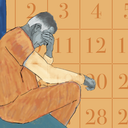
In 2009, the National Academy of Sciences (NAS) released a landmark report titled Strengthening Forensic Science in the United States: A Path Forward, in which it raised significant questions about the validity of every forensic science discipline except DNA analysis. The report concluded, “no forensic method has been rigorously shown to have the capacity to consistently, and with a high degree of certainty, demonstrate a connection between evidence and a specific individual or source.” In a report for The Intercept, journalists Liliana Segura and Jordan Smith assess the meager progress in forensic science in the decade following the release of the NAS report and explore how politics, tradition, and inertia have contributed to an “ongoing crisis within forensic science that remain[s] woefully unresolved.”
Forensic science, including fingerprint analysis, hair analysis, bite mark comparison, and arson investigation, is widely used in criminal prosecutions, but it has been found to contribute to wrongful convictions in a startling number of cases. A 2017 DPIC review of 34 death-row exonerations found that junk science contributed to nearly one-third (32.4%) of those wrongful convictions. An FBI review of hair analysis found that analysts had made erroneous statements in at least 33 death penalty cases, but many of those never had an opportunity for reconsideration – by the time the report was released, nine of those defendants had been executed and five had died of other causes. Segura and Smith explain, “high-profile forensics scandals and a rising tally of exonerations have made it hard for even the most stubborn forensic experts to ignore the problem of junk science.”
In 2016, a follow-up report by the President’s Council of Advisors on Science and Technology warned, “Without appropriate estimates of accuracy, an examiner’s statement that two samples are similar — or even distinguishable — is scientifically meaningless: It has no probative value and considerable potential for prejudicial impact. Nothing — not training, personal experience nor professional practices — can substitute for adequate empirical demonstration of accuracy.” Yet, to the dismay of Harry Edwards, a senior judge on the U.S. Court of Appeals for the District of Columbia who co-authored the NAS report, law enforcement and prosecutors have actively opposed reform. “The group that surprised me the most were prosecutors,” he said. “Not just at Department of Justice, but prosecutors generally. Because I would’ve assumed, in my naïve way, that they would’ve welcomed a report saying we need more and better research to validate these practices, and to make them better. Because that serves both prosecutors and defendants well. … I think a number of them were worried that if you took the report seriously and started doubting some of what they had been doing, this would open cases that they thought were long gone.”
Edwards particularly noted the problems with bite-mark evidence. “I was flabbergasted when I listened to the person that was testifying about bite marks,” he recalled. “There were no studies of any consequence on validation, reliability, and I didn’t have to be a scientist to understand that what he was saying was fragile, at best.” Bite-mark evidence relies on two assumptions, Smith and Segura explain: “First, that human dentition, like DNA, is unique; second, that skin is a suitable medium for recording this uniqueness. The problem is that neither premise has been proven true; in fact, scientific research conducted to date has suggested the opposite — and that bite-mark matching is an entirely subjective affair.” It has been implicated in 31 wrongful convictions, and a study that asked 39 analysts certified by the American Board of Forensic Odontology to examine 100 case studies found that they unanimously agreed on whether the evidence was a human bite mark in only four cases. The Texas Forensic Science Commission concluded “there is no scientific basis for stating that a particular patterned injury can be associated to an individual’s dentition,” and recommended a moratorium on its use. Despite this evidence, several leaders in forensic odontology have dug in their heels. One dentist, Dr. Robert Dorion, called the focus on wrongful convictions “fake news,” and asserted, without evidence, that wrongful convictions connected to bite marks “had ceased.”
In the ten years since the NAS report, a few reforms have been made, including the National Commission on Forensic Science banning its practitioners from using the misleading phrase “reasonable degree of scientific certainty” in their testimony. Judge Edwards said, “we’re not where we ought to be” in terms of implementing reform. Most particularly, he is disappointed that a key recommendation from the report has not been adopted: the formation of a “national group that was independent, separate from law enforcement, that oversees forensic science. That hasn’t happened,” he said.
(Liliana Segura and Jordan Smith, BAD EVIDENCE: Ten Years After a Landmark Study Blew the Whistle on Junk Science, the Fight Over Forensics Rages On, The Intercept, May 5, 2019.) See Innocence.

